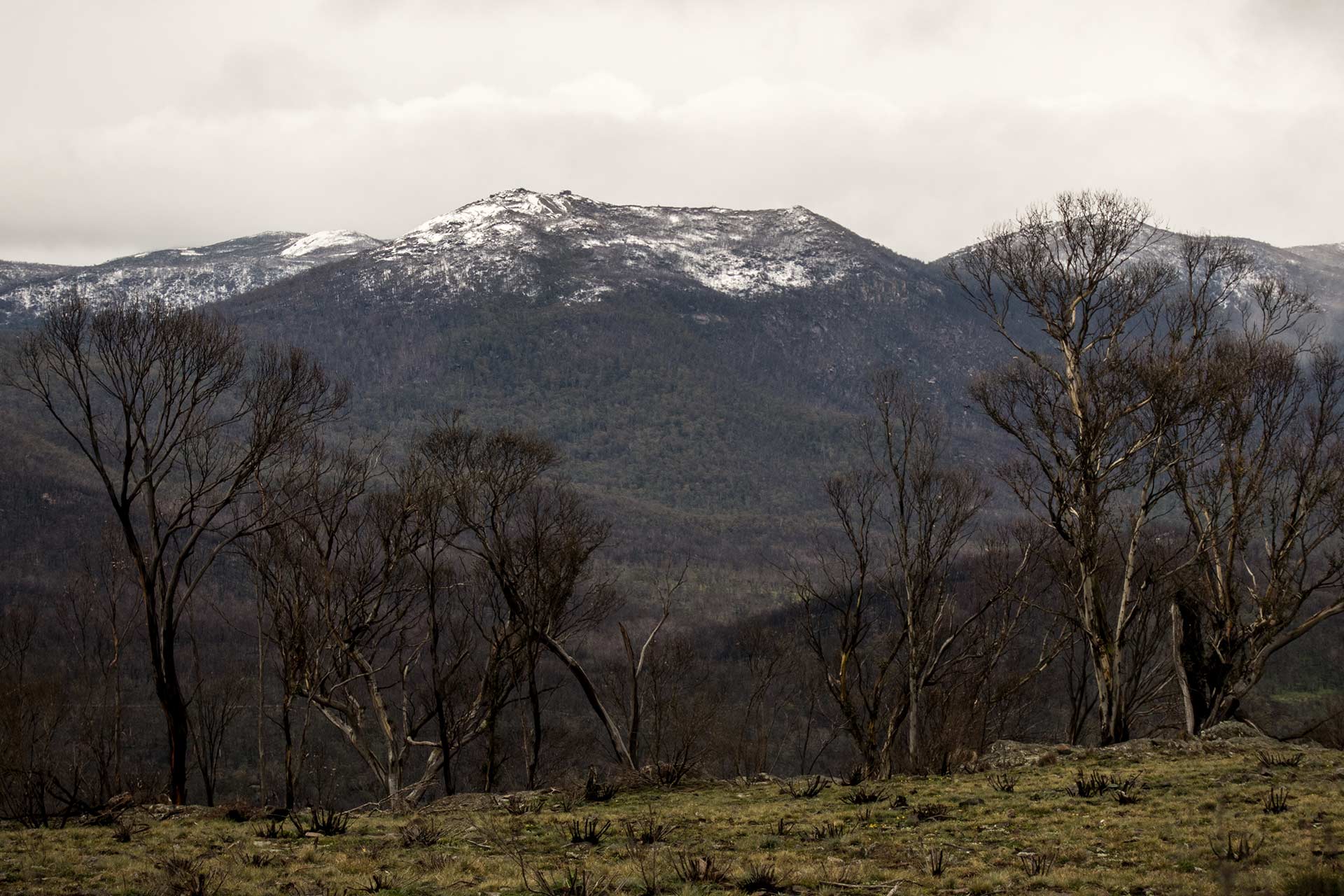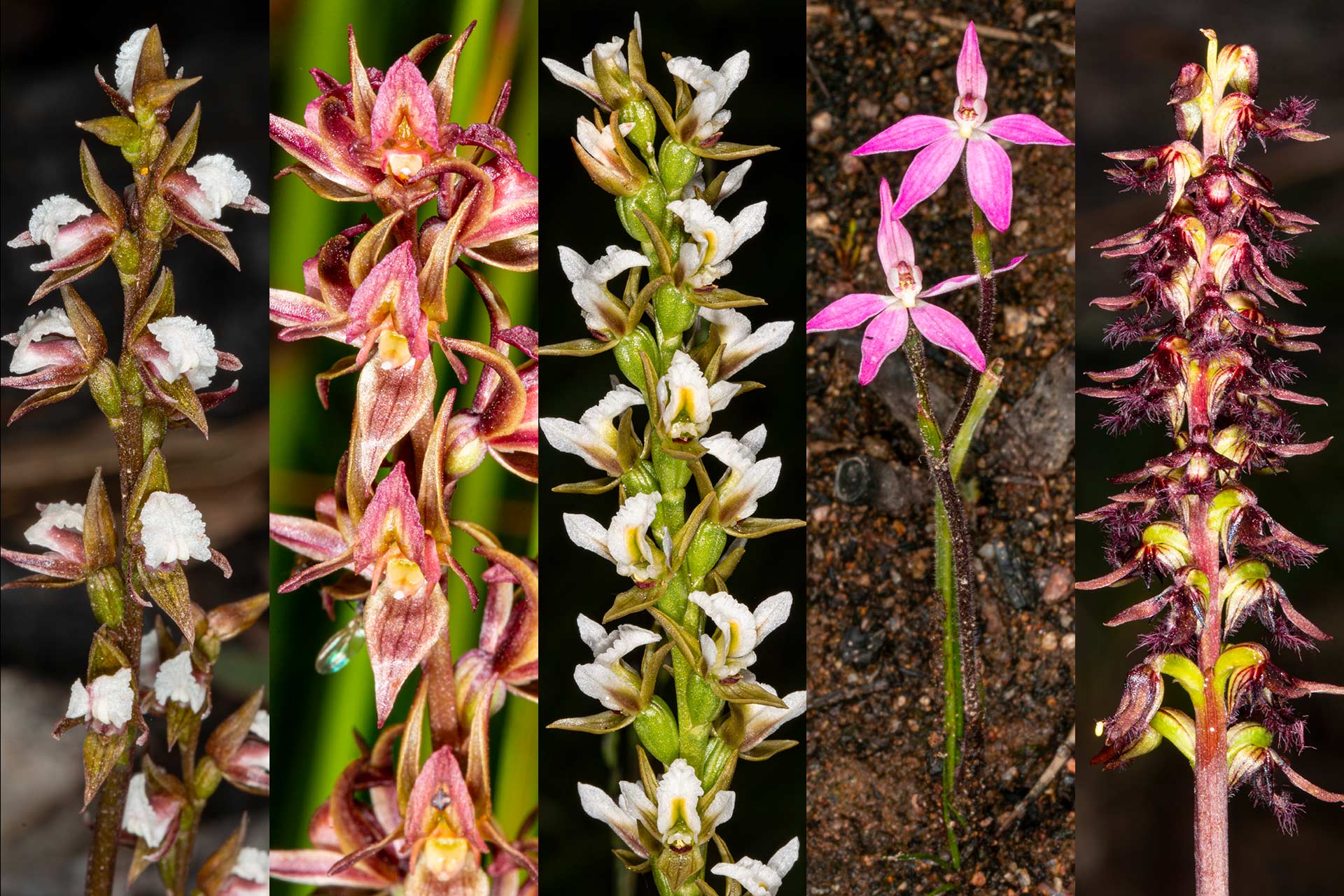Treasure hunting for the jewels of the bush
Orchid Society of Canberra volunteers are on a mission to find out how the ACT’s native orchids are faring in the aftermath of the 2020 bushfires
Contributed by: Derek Corrigan
The Orchid Society of Canberra (COS) is an entirely volunteer run organisation. Keen to make a real contribution to the conservation and knowledge of the local wild orchid species, COS has recently established a Conservation Group. This group has undertaken projects in the ACT and surrounds to conserve local orchids.
The 2020 Orroral Valley fire, which severely burnt much of Namadgi National Park, provided an opportunity for the group to contribute to post-fire recovery work. This fire severely burnt 80% of Namadgi National Park which also represented up to 100% of some rare orchid populations. With a small grant to help cover costs, we conducted orchid surveys of the burnt areas of Namadgi to collect data on the fire response of the orchid species found there. This has primarily been a ‘citizen science’ project, with guidance and assistance from scientific experts. Following the 2003 ACT bushfires, we observed some unexpected orchid growth, including the discovery of 2 new species in 2005, Prasophyllum venustum (Charming Leek Orchid)and Prasophyllum viriosum (Stocky Leek Orchid).
Our survey work started at the end of winter when we could first enter the burnt areas. With snow on the nearby mountains, we started the project.

Even though it was still too early for the spring flowering, there were already good examples of orchid growth activity both from the past autumn’s species and emerging spring flowering plants. The drive out to the southern regions took us through dramatic scenes of destruction, more resembling a moonscape than the Namadgi bush of old. It would be a big job, and with our hardhats on, our shoes disinfected and suitably dressed against the chilly breeze, we made our first field inspections. During the following nine months, we would collectively travel some 10,638 km, making 37 different outings, including 11 officially organized group field trips plus many other group outings. Many of the less accessible areas of the park were not visited as time, resources and timing did not allow for it.
To assist with this work, the Conservation Group were granted special access to areas restricted to the public. When required we were provided gate keys and the loan of a radio for emergency contact.
To ensure the best chance of a successful project, planning was essential. With such a large area to cover, and different species emerging and flowering at different times, it was important to plan which orchids might be flowering when and where. This required considerable time and effort to gather and collate the information required, but the information was critically important when planning each site visit. To add to planning difficulties were the orchids themselves, which in response to the fire and good following rains, all flowered several weeks earlier than normal, compressing the flowering seasons. Orchid location records, for sensible reasons, are not publicly readily available, so it took many volunteer hours to assemble the data needed before entering the field.

As new species were found following the 2003 bushfires, a similar outcome would have been rewarding, but to date no new species have been found following the Orroral Valley fire. What has been found, are new, previously unrecorded populations in new areas of several species, greatly expanding the known numbers and locations of these species. New populations of Paraprasophyllum stipatum (a Leek Orchid), Oligochaetochilus squamatus (Southern Rustyhood) and Corunastylis ectopa (Brindabella midge orchid) were all found. The only known population of the newly described Paraprasophyllum jeaneganiae (Jean’s Leek Orchid) was also an interesting find for all involved as previously none of us had ever seen this species. No one was more pleased than Jean herself, in whose honour this species has recently been named.
The Conservation Group’s volunteer efforts were not only limited to the burnt areas of Namadgi. We took two multiple day visits to the Tumbarumba area, where we assisted in the much larger Fire Affected Orchids Project, conducted by Cranbourne Royal Botanic Gardens and Latrobe University. This project included other volunteer groups’ assistance to cover areas in NSW, VIC, and SA. The first visit in early December was to survey high country swamps for 2 different rare species of Paraprasophyllum. While these swamps are on private properties, landowners work with government agencies to protect them. In some cases, special fences have been provided to exclude brumbies from these sensitive areas. During this visit we counted some 2,300 Paraprasophyllum bagoense (Bago leek orchid) and over 1,000 Paraprasophyllum keltonii (Kelton’s Leek Orchid). During the second visit in early February 2021 to the same swamps, we surveyed for a different later flowering rare species. In just 2 days over 4000 Paraprasophyllum innubum (Brandy Mary’s Leek Orchid) orchids were counted.

As well as these field trips, the group has also assisted the ACT Government Conservation Research team by looking for populations of the pollinating thynnine wasp for Caladenia actensis, the Canberra Spider Orchid. This is done by taking potted plants of Caladenia actensis, specially grown from seed, into specified areas of Canberra parkland and recording if they are visited by the wasp in a 5-minute period at each location before moving the plant to another site about 50 meters away and repeating the process over and over. While the flowers lasted, we were able to map the extent of the wasp populations. This work will assist in identifying suitable areas where a reserve population of these orchids could be established.
The Conservation Group remains keen to make a real contribution to the conservation and knowledge of the local wild orchid species and to provide all those native orchid enthusiasts with a similar interest in the opportunity to collectively concentrate all our efforts towards the understanding and protection of these unique bush gems. The Conservation Group welcomes all such likeminded enthusiasts and looks forward to meeting all those interested in joining with us.
Our efforts have already achieved results and revealed areas that need further study and exploration.



